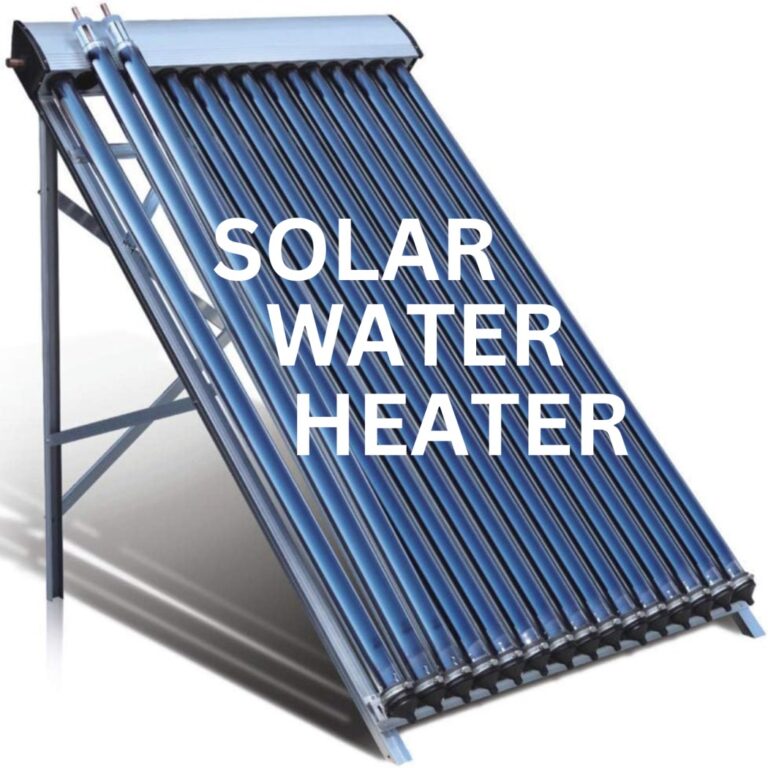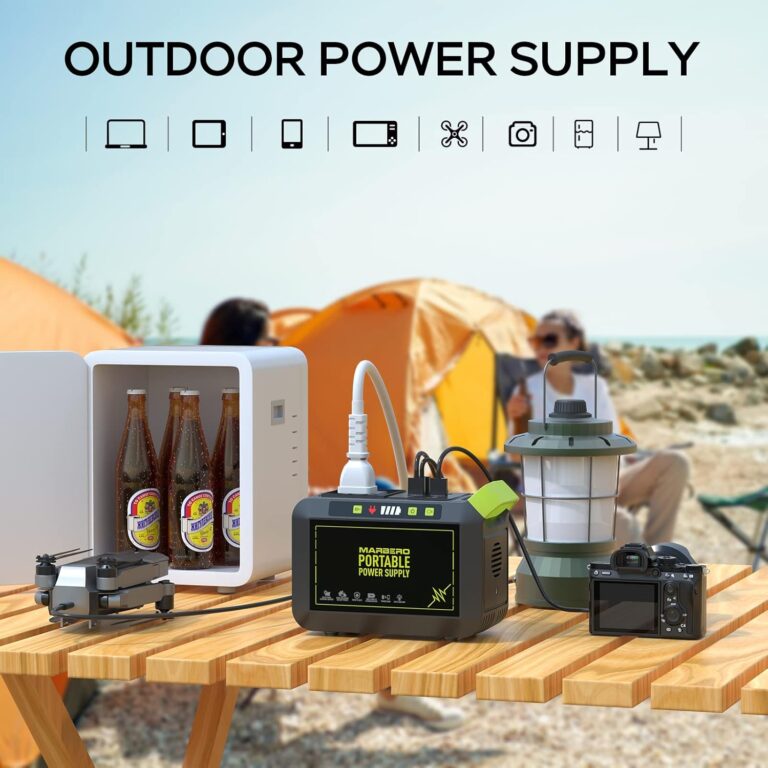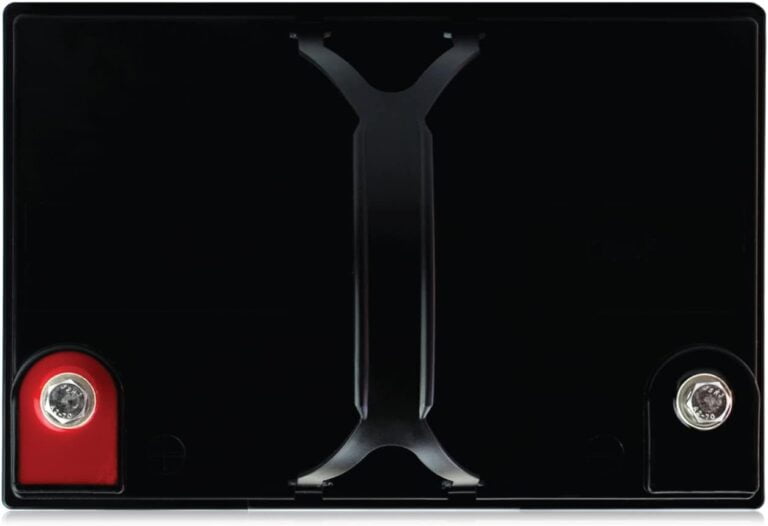Solar-Powered Water Pumps
Our editorial team independently selects all products featured in this review. This article may contain affiliate links, and we may earn a commission from purchases made through those links. For more information, please refer to our affiliate disclosure.
Solar-powered water pumps have become a revolutionary solution to meeting modern irrigation needs. They are going green, ensuring sustainable energy sources for water pumping.
These innovative systems use sunlight to draw water from wells, rivers, or reservoirs and are a renewable, efficient, and cost-effective substitute for using electricity or fuel to pump water.
This article discusses the advantages, constituents, and uses of solar-powered water pumps and further outlines the installation process and the basic guidelines for proper equipment maintenance.
Table of Contents
Quick Links of the Best Solar-Powered Water Pumps
- AEO Solar Water Pump Kit. Ideal for small ponds, bird baths, and fountains.
- Sunterra Solar Pond Pump Kit. Ideal for small-to-medium-sized water features and bird baths
- Solatec Solar Fountain Pump. Ideal for bird baths, fish tanks, small ponds, and garden decoration
- Lewisia Solar Water Pump Kit. Ideal for large bird baths, ponds, and garden fountains
- BACOENG Solar Water Pump. Ideal for larger ponds, irrigation, and hydroponics systems
Benefits of Solar-Powered Water Pumps
Cost-effective and Energy-Efficient
Another main benefit of using solar-powered water pumps is the issue of costs. These systems are easy to install, and after installation, the cost of running them is negligible since they depend on the sun’s natural resources.
Farmers, ranchers, and homeowners who wish to save on energy costs may utilize them as they don’t require fuel or power to run.
Furthermore, water pumps powered by solar energy are very efficient in their energy consumption. By improving solar panel and pump designs, these systems can harness the conversion of solar energy into pumping power, which will work in low-light environments.
Environmentally Friendly
Clean and sustainable energy sources, like solar energy, must be used when developing water pumps. These systems minimize dependency on fossil fuel energy to cut greenhouse gas emissions and foster renewable solar energy.
Appreciably, using solar-powered pumps reduces climate change and fosters environmental protection.
Versatile and Reliable
Another advantage that must be discussed is that solar-powered water pumps are versatile. These systems can be used in many environments, from small, remote rural areas to city gardens and farms.
They are beneficial in areas where connection to the electrical supply network is either scarce or nonexistent, thus allowing people to have a constant water source for irrigation, watering animals, and household needs.
Moreover, there is another advantage to using solar-powered water pumps: These pumps do not fail easily.
These systems are designed to run as long as the installation and maintenance are done correctly and regardless of bad weather conditions.
They are made to last long without much wear and tear and thus do not need frequent repairs, which allows for a constant water supply to meet different needs.
Also read: Honda EU2200i Portable Inverter Generator
Components of Solar-Powered Water Pumps
Solar Panels
Solar panels are the center of a solar-powered water pump system. They collect solar energy and turn it into electricity.
The capacity of the solar panels and the number of panels needed to be installed depend on various aspects, such as the pumping depth, the volume of water to be pumped, and the intensity of solar radiation at the place of installation.
Pump and Motor
The pump and motor are the main components that help move the water through a particular pressure head or transport it to a certain height.
Several types of pumps are used in solar-powered systems, including submersible, surface, and floating pumps.
The type that needs to be used in a specific application depends on the water source, the pumping requirements, and the application involved.
A DC (direct current) motor may convert the electrical energy from the solar panels into mechanical energy to operate the pump.
The pump and motor are the central components of the system and must be efficient and long-lasting to achieve the desired result.
Controller and Wiring
This component controls the electricity current from the solar panels to the pump.
It helps to get the best results by properly comparing the pump’s power rating to the available power from the solar system. The controller also safeguards the system from certain risks, such as overloading and damage.
Effective wiring of a pump connected to solar power is essential to ensure the equipment’s safety and functionality.
Therefore, the cables connecting solar panels, controller, and pump are of high quality and can withstand weather conditions without developing faults, reducing energy losses.
5 Best Solar-Powered Water Pumps Today
AEO Solar Water Pump Kit
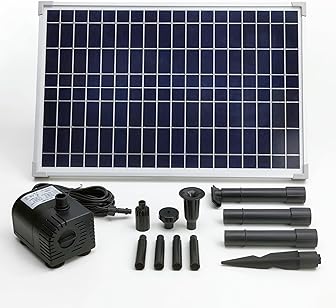
If you want to keep your bird baths and small ponds eco-friendly, the AEO Solar Water Pump Kit is a good pick.
The brushless motor ensures that it runs quietly, and the flow rate can be changed to suit different needs. However, it doesn’t work as well on cloudy days and is best for smaller bodies of water.
Pros
- The flow rate can be changed to fit different water features.
- A brushless motor makes the machine run quietly and efficiently.
- It comes with a long-lasting solar screen that will work reliably.
- Simple to set up and keep up.
Cons
- It only works with smaller water effects.
- Solar power means that performance may be different on cloudy days.
Sunterra Solar Pond Pump Kit
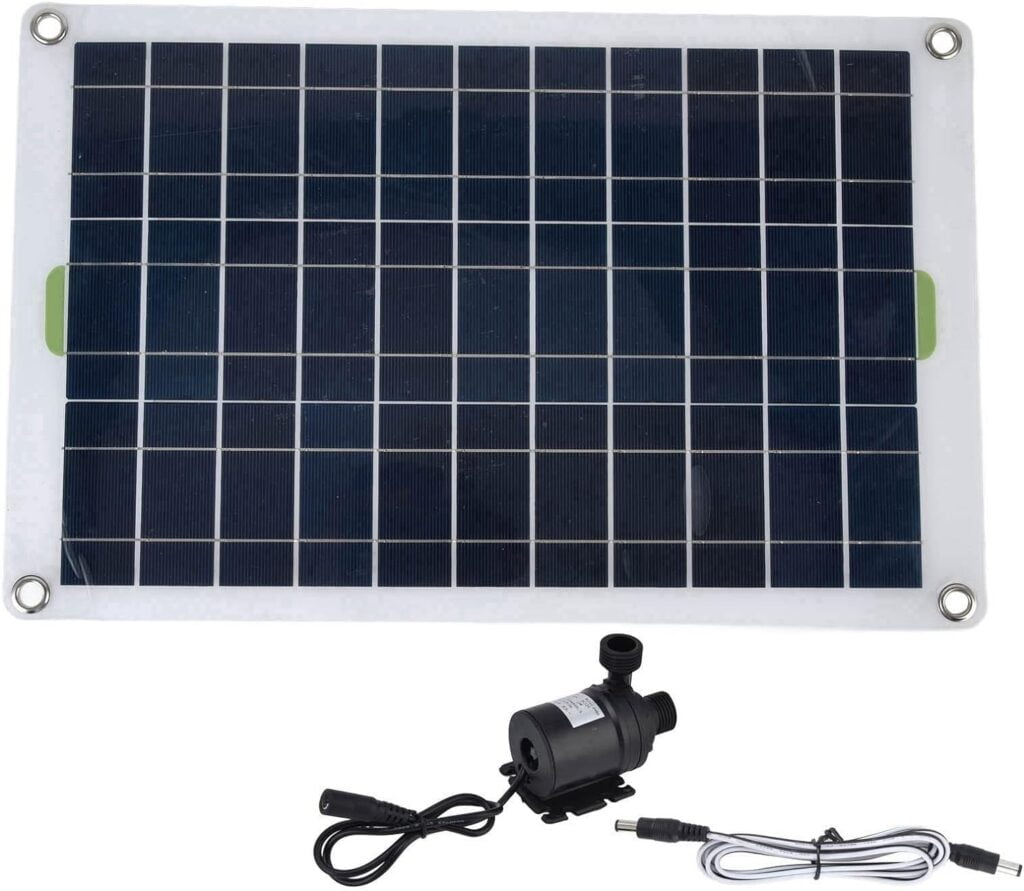
The Sunterra Solar Pond Pump Kit is a great choice for small- to medium-sized water features that don’t break the bank. It’s simple to set up and doesn’t need much upkeep.
However, it’s not great for bigger ponds because it has a slow flow rate.
Pros
- Small and simple to set up.
- Good for water effects that aren’t too big or too small.
- Cheap and good for the environment.
- Doesn’t need much upkeep.
Cons
- The slow flow rate means it might not work for bigger ponds.
- Cloudy days make solar panels work less well.
Solar Fountain Pump from Solatec

The Solatec Solar Fountain Pump is great for making bird baths and small ponds look nicer. It has different water patterns because it has multiple fountain heads.
It’s nice that it’s small and light, but it only works in direct sunlight, so it’s not very useful on dark days.
Pros
- Different fountain heads make the water flow in different ways.
- It’s easy and quick to set up.
- Easy to carry and light.
- Great for small ponds and bird baths.
Cons
- It only works in direct sunlight and doesn’t have a power backup.
- There is not enough power for bigger water effects.
Green Solar Water Pump Kit from Lewisia
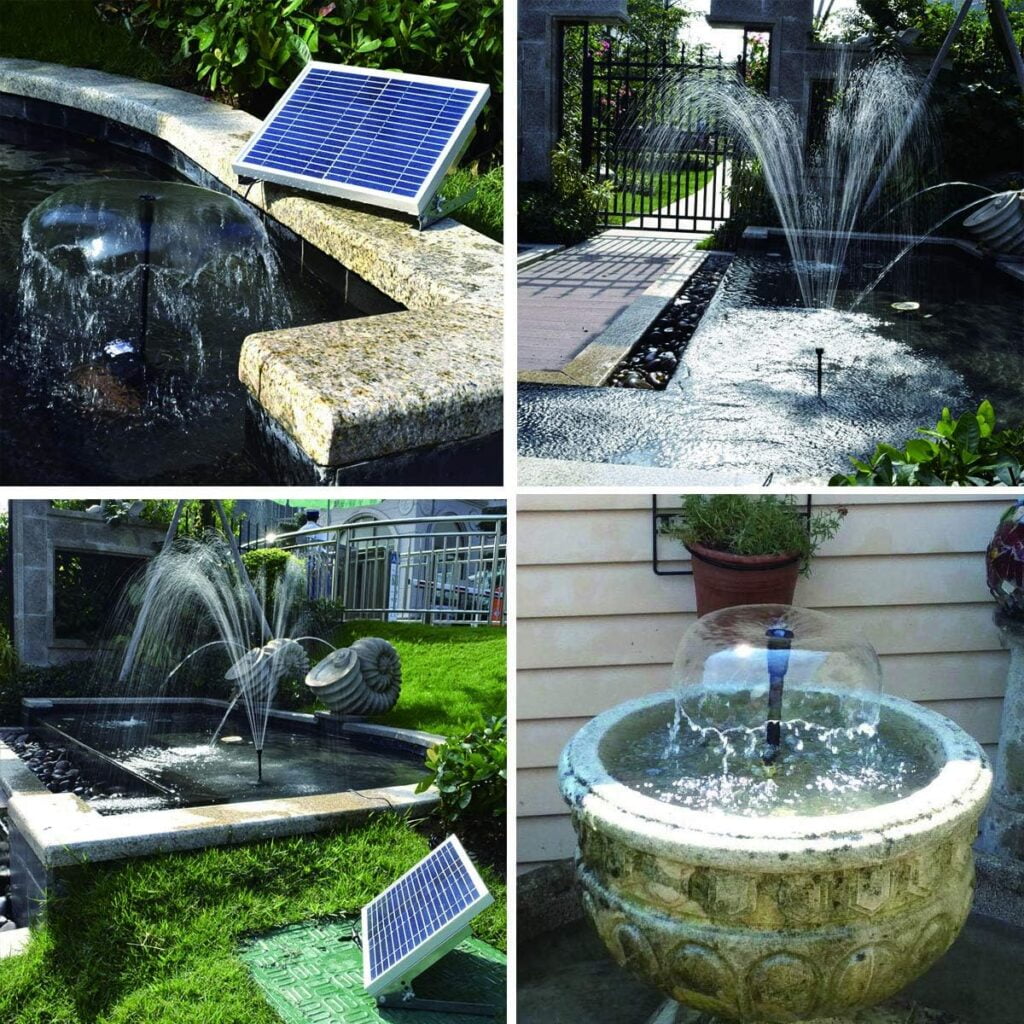
If you need a strong and dependable solar pump for bigger bird baths, ponds, and outdoor fountains, the Lewisia Solar Water Pump Kit is a great choice.
The battery backup makes sure that the computer will keep working even when it’s dark or late at night.
Even though it costs more, it is a good purchase because it works well and lasts a long time.
Pros
- It has a high flow rate, which makes it good for bigger water effects.
- The battery backup makes sure that the device keeps working even when it’s dark or at night.
- The solar panel lasts and works well.
- Simple to put together and use.
Cons
- It costs more than simple models.
- The battery life may decrease over time.
BACOENG Solar Water Pump
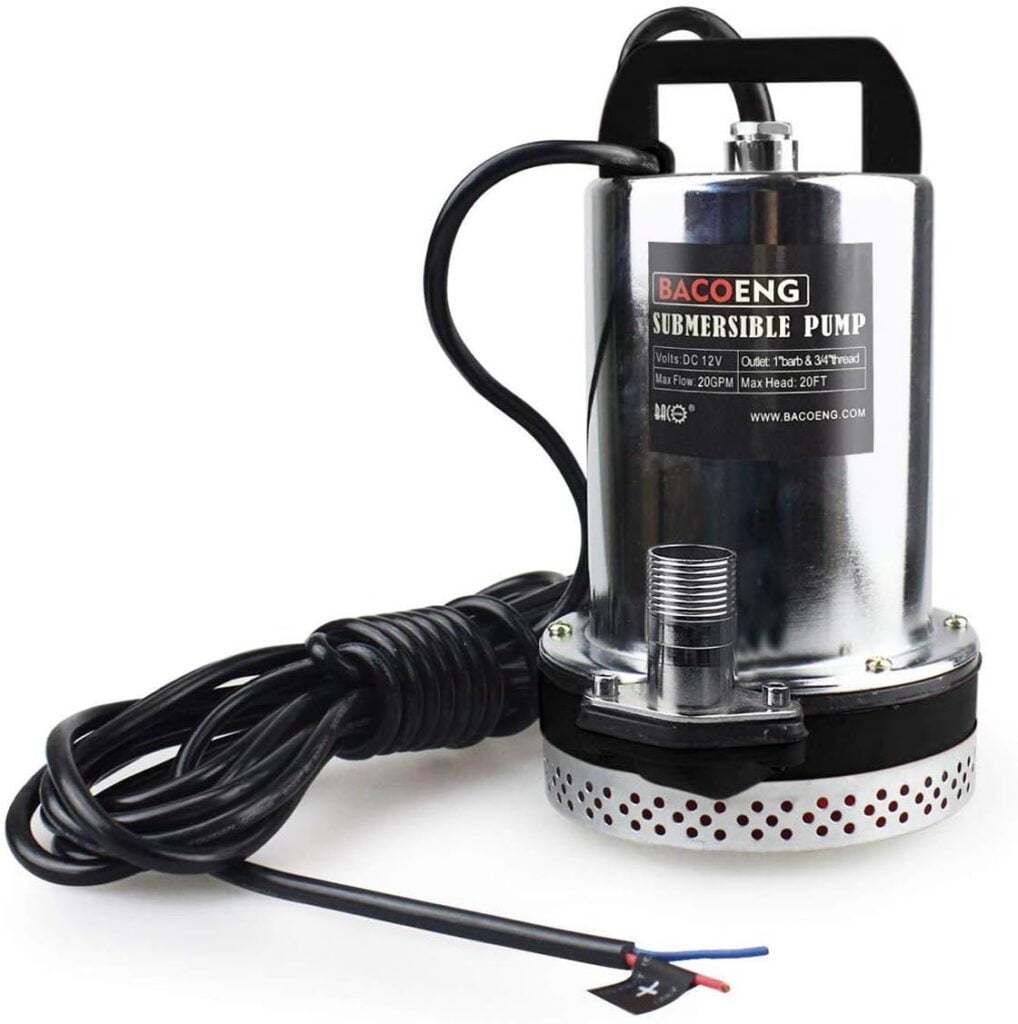
The BACOENG Solar Water Pump is made to work hard in bigger ponds, watering systems, and hydroponics. Its strong solar panel and high flow rate make sure that water moves through it efficiently.
Even though it costs more at first, its performance and flexibility make it worth the money, as long as it gets enough sunlight.
Pros
- The high flow rate is great for watering large ponds.
- Strong 20-watt solar panel for long-lasting use.
- It can be used for many purposes, including hydroponics.
- Built to last and be used for a long time.
Cons
- It costs more upfront.
- It needs a lot of sunlight to work at its best.
Also read: The Best Electric Water Pump to Buy
Applications of Solar-Powered Water Pumps
Agricultural Irrigation
Solar-powered water pumps have transformed how farmers use water to irrigate crops, especially in areas that lack electricity or access to power sources.
These systems allow farmers to pump water from wells, rivers, or reservoirs to their farms so that they have a constant water supply for irrigation despite the area they come from being without electricity most of the time.
This reduces the energy costs farmers use in their farming activities since solar-powered systems are cheap and enhance productivity.
Livestock Watering
Solar water pumps are common in livestock watering systems and crop production systems. These systems can also guarantee a water supply for stock, particularly in remote pastures or rangelands.
The animals benefit from providing water through freshwater sources through solar pumps, as they can access clean water and food.
Domestic and Community Water Supply
Solar-powered water pumps also play a major role in providing clean water for human use, both domestic and public. These systems can provide water from wells or boreholes in rural and developing areas to provide safe water for household and community consumption.
Since solar pumps eliminate the need to move water from a distant source, they can greatly enhance the standard of living and diminish the number of hours women and children spend searching for water.
Installation and Maintenance
Site Assessment and System Sizing
However, a few preliminary steps must be considered before fixing the solar water pump. These include determining the water source and pumping depth, water demand, and the site solar irradiance.
According to these factors, a professional is in a position to determine the right size system that would suit the pumping needs.
Installation Process
Solar pumping system installation can be done in several steps:
First, the solar panels are anchored to a proper structure to guarantee that they will be adequately exposed to sunlight.
Depending on the system design, the pump and motor are installed either in the water source, submerged, or on a surface.
The controller and wiring are linked and confirmed for functionality.
Maintenance and Troubleshooting
Although these solar water pumps are less prone to wear and tear than other mechanical devices, they occasionally require proper maintenance to guarantee proper functioning and durability.
This includes physically inspecting the wiring and connections to ensure they are not frayed or broken, cleaning the solar panels to ensure they are clean and clear of debris, and determining the system’s effectiveness.
In this respect, anytime there is a problem or a breakdown, a professional technician should resolve it.
Low water pressure, fluctuating water flow, or a complete halt in the entire system’s operation may be encountered.
Early detection and control of these issues are essential for properly functioning the solar-powered water pump and reducing the time it takes to address them.
Also read: The Best Portable Water Filters for Camping
Conclusion
Solar pumps are efficient, affordable, and dependable for irrigation, livestock watering, and domestic purposes. These systems use solar energy and thus offer clean, renewable energy while conserving the environment by minimizing the use of fossil energy.
Due to their ease of use and user-friendly nature, portable solar water pumps are widely used in farming areas, homesteads, and other related areas.
With the increasing quest for sustainable energy sources, the use of solar-operated water pumps is bound to expand significantly. This way, people and communities can save on energy costs while supporting green and sustainable development.
Solar-powered water pumps will be essential to addressing the issues raised by water shortages and adopting sustainable development as technology advances and public awareness grows.



